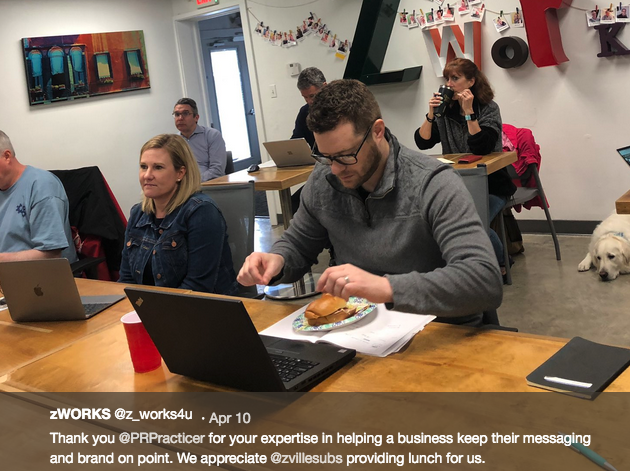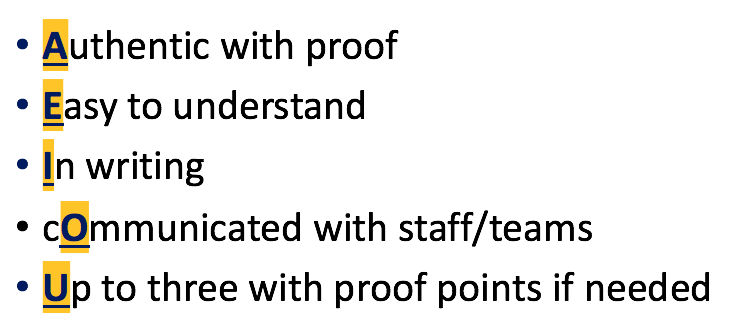 I was thinking about writing this blog and then (moments ago) I received an email from a client with the subject line, “Phones are going NUTS!!!!!” (yes, caps and five exclamation points). So I thought, well now is the time to write this and share it.
I was thinking about writing this blog and then (moments ago) I received an email from a client with the subject line, “Phones are going NUTS!!!!!” (yes, caps and five exclamation points). So I thought, well now is the time to write this and share it.
I love email newsletters as a communications tool. They’re relatively easy to set up, add/maintain contacts, brand and use to communicate. Most of our clients have email communications in their strategic plans. They all have various reasons why that ties to a goal.
Here are uses and results.
- The client noted above with their phone going NUTS right now runs a local, family operated heating, cooling and plumbing business. Their brand is personal and customer driven. We email information to educate customers and remind them of services. Today’s email was simple… don’t forget to call us to schedule your fall furnace tune up. The people who received the message subscribe to a maintenance agreement program and have paid for the service already. So wow… one email made the phones ring, schedule fill and get trucks on the road. Trucks on the road means more branding because you’ll see the Howald Heating, Air Conditioning and Plumbing logo around Indianapolis.
- We work with the Stutz Artists Association. The group is a non-profit that’s a members association. During our planning assessment, we were given access to their email newsletter, which was set up already. We quickly noted that there were not a lot of member email communications being sent via their newsletter system. There were emails that were forwards from personal email addresses with bits and pieces of information. Over 90 days, we’ve started a consistent emails campaign for membership and they’re seeing the impact. The last email open rate was over 80% among members. The benefit: the more in-the-know members, the better engagement for association events.
- Another client, Cargo Services, uses email communications to support their sales team. The company is a freight forwarder, think importing and exporting (and yes, tariffs). Each member of the team has an email list of clients and prospects segmented in the system. Emails are sent from a customer’s sales rep (meaning the email has the sales rep’s name on it). Their communications program is “thought leadership” driven. That means the client has articles on industry topics to support their brand: Customer Driven, Creative Solutions, Community Focused. Topics range from their community program supporting foster youth in Indiana to articles with tariff updates, industry changes, regions of the world for manufacturing and more. A day or so after an email is sent, we give sales reps the information about who has opened the email and clicked to the full article on their website. We’re seeing more email opt ins (about 20 in August alone) and more website traffic. In turn, that is driving client conversations and sales.
If you’re interested in creating a strategic communications program that includes email marketing, contact us to start the conversation.

 conversation about the ins and outs. The approach was to ask the question: is social media right for your company? The audience included a large regional business leader to a small solo shop owner along with a couple of women business owners opening store fronts. Regardless of the business size and scope, the list to the right shares what anyone should consider before jumping into social media. I’ll briefly touch on each.
conversation about the ins and outs. The approach was to ask the question: is social media right for your company? The audience included a large regional business leader to a small solo shop owner along with a couple of women business owners opening store fronts. Regardless of the business size and scope, the list to the right shares what anyone should consider before jumping into social media. I’ll briefly touch on each. a workshop on public relations messaging for professionals at our local co-working space. When considering how to make the session engaging, I spent time researching, reading and thinking about how others approach the topic. Here are my key takeaways from the preparation and the session worth considering if your company is struggling with the message behind your brand.
a workshop on public relations messaging for professionals at our local co-working space. When considering how to make the session engaging, I spent time researching, reading and thinking about how others approach the topic. Here are my key takeaways from the preparation and the session worth considering if your company is struggling with the message behind your brand.
 If I stayed at home to work, people wouldn’t take me seriously. Well that’s seriously too bad for those people (if that sounds harsh, sorry). When I started my business, I was one of few. The phrase ‘gig worker’ would be coined many years later. Those of us who run our own businesses take it seriously. We keep up on trends and techniques by reading, innovating and doing. We meet people in our communities through constant networking. We get involved in civic and community events. We know what’s happening. I feel much more in the know now than I ever did working at a company, which was an insular experience. I’m serious about my work and appreciate working with people who understand it doesn’t matter where you work but instead the work you produce to support their goals.
If I stayed at home to work, people wouldn’t take me seriously. Well that’s seriously too bad for those people (if that sounds harsh, sorry). When I started my business, I was one of few. The phrase ‘gig worker’ would be coined many years later. Those of us who run our own businesses take it seriously. We keep up on trends and techniques by reading, innovating and doing. We meet people in our communities through constant networking. We get involved in civic and community events. We know what’s happening. I feel much more in the know now than I ever did working at a company, which was an insular experience. I’m serious about my work and appreciate working with people who understand it doesn’t matter where you work but instead the work you produce to support their goals.